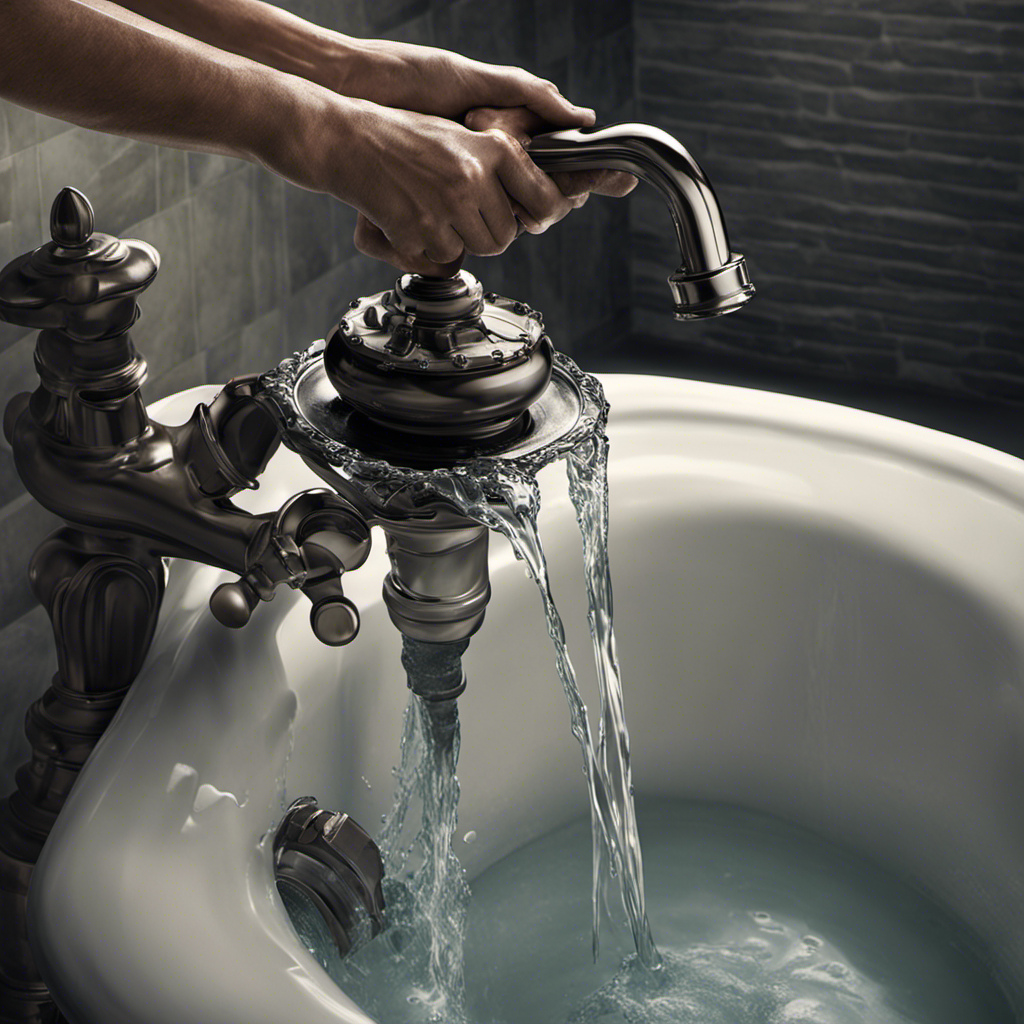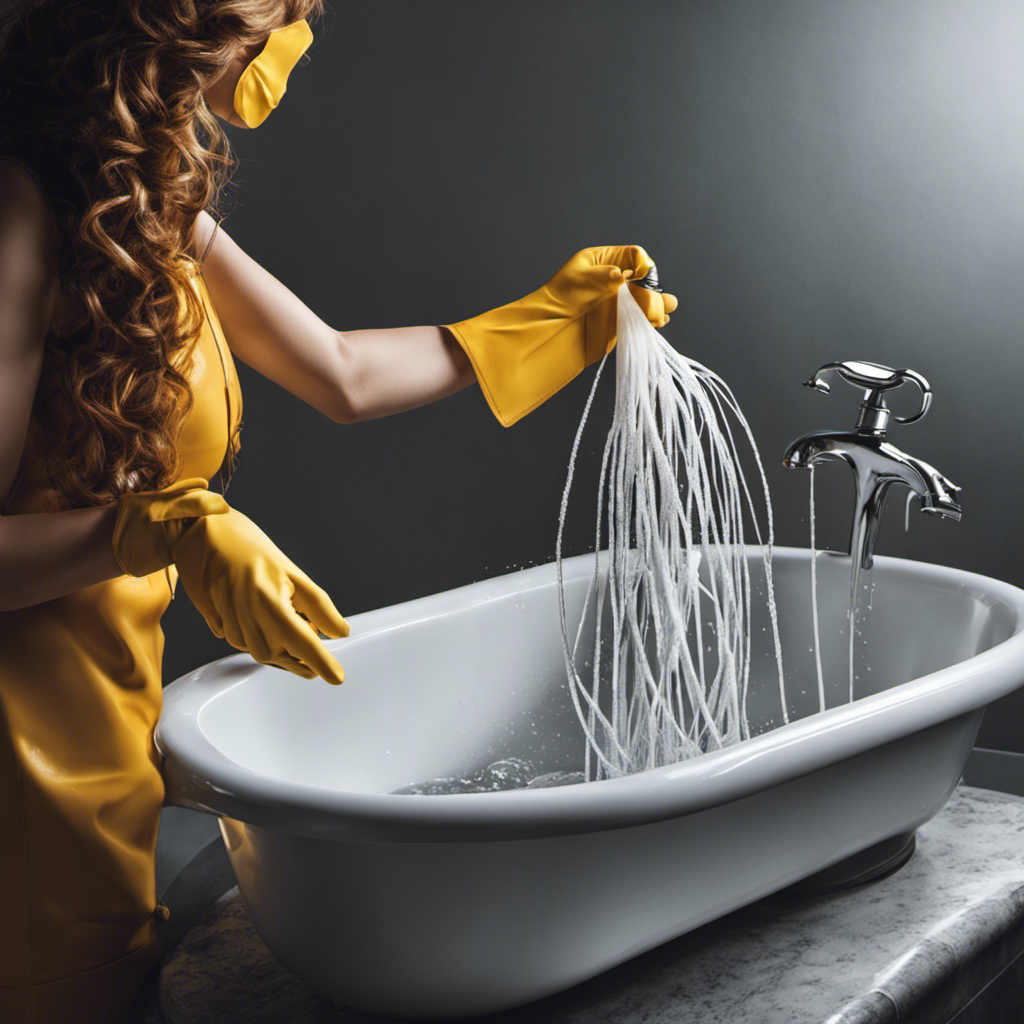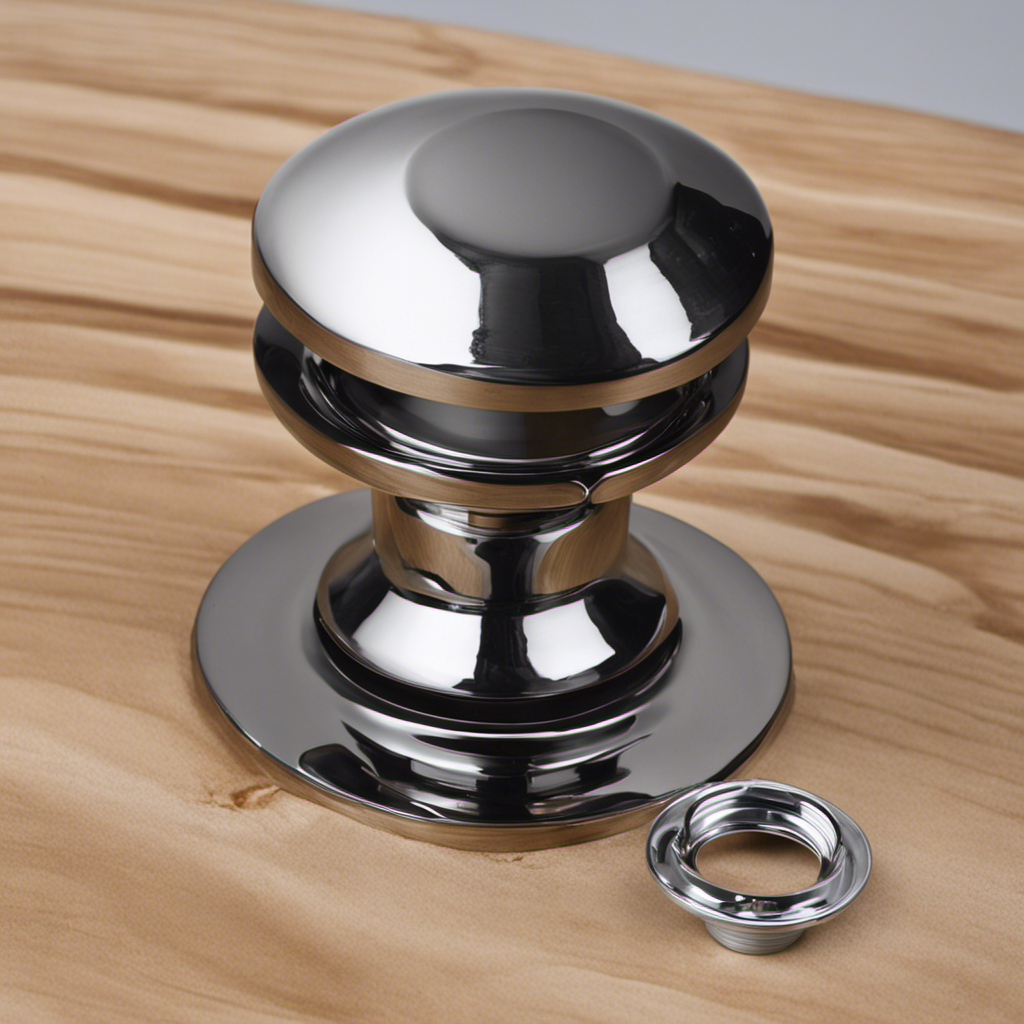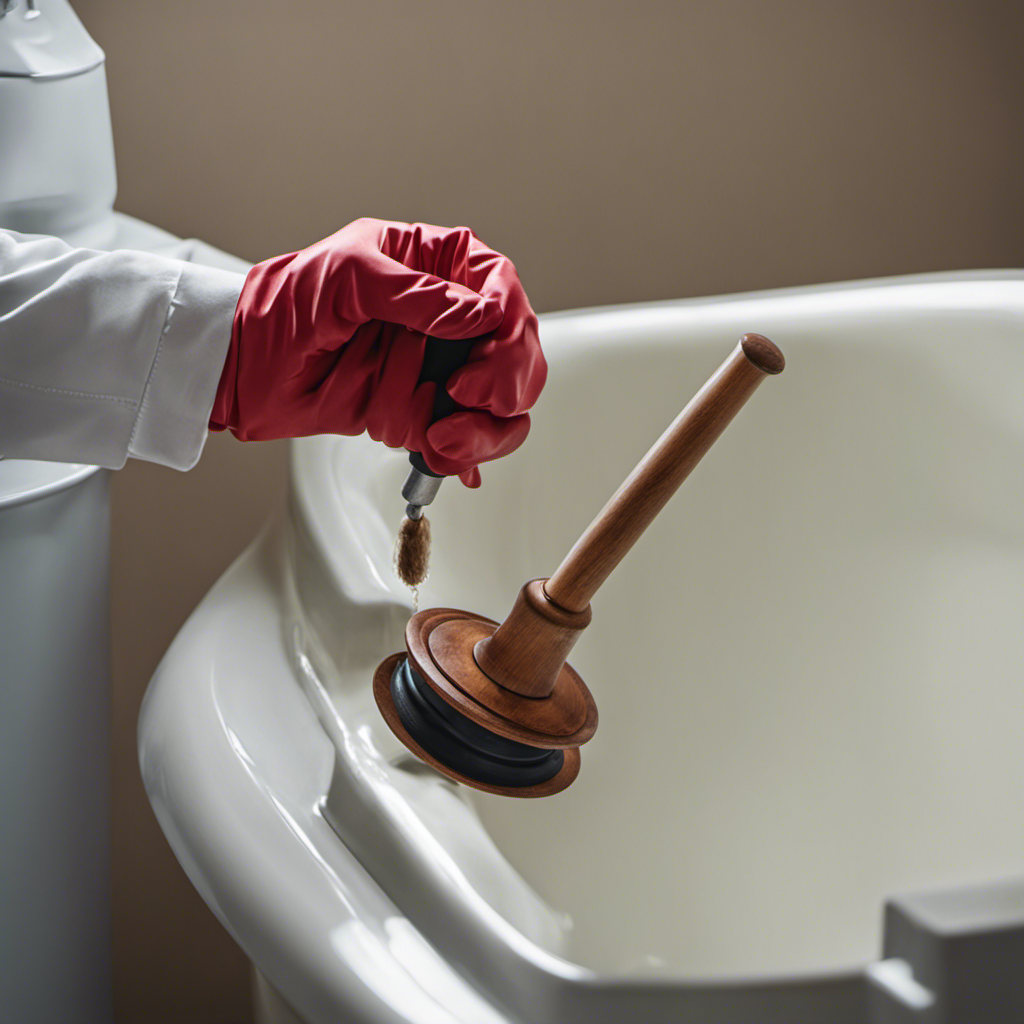I’ve been there before – standing ankle-deep in water as my bathtub drains at a snail’s pace. It’s frustrating, isn’t it?
But fear not, because in this step-by-step guide, I’ll show you how to unclog that sluggish drain and regain the smooth-flowing bliss of a properly functioning bathtub.
From understanding the causes to gathering the necessary tools, we’ll cover it all.
So grab your gloves and let’s get to work!
Key Takeaways
- Accumulation of hair, soap scum, and debris in the drainpipe is a common cause of slow bathtub drainage.
- A faulty stopper or drain plug can restrict water flow and lead to slow drainage.
- Inadequate ventilation can cause a vacuum effect and contribute to slow bathtub drainage.
- Regularly cleaning drain stoppers and using a hair catcher can help prevent clogged drains in the future.
Understanding the Causes of Slow Bathtub Drainage
You may be wondering why your bathtub is draining so slowly. Identifying common bathtub drain problems is the first step in troubleshooting slow draining issues.
There are several potential causes for this problem. One common issue is a clogged drain. Over time, hair, soap scum, and other debris can accumulate in the drainpipe, impeding water flow.
Another possible cause is a faulty stopper or drain plug. If the stopper is not opening fully or is not sealing properly, it can restrict water flow.
Additionally, a problem with the venting system can also lead to slow drainage. Inadequate ventilation can create a vacuum effect, inhibiting the smooth flow of water.
Understanding these causes will help us address the problem effectively. Now, let’s move on to gathering the necessary tools and materials.
Gathering the Necessary Tools and Materials
To gather the necessary tools and materials for this task, start by checking if you have a plunger, a bucket, and some baking soda and vinegar. These items are essential for unclogging a slow draining bathtub.
Additionally, it’s important to note that there are different types of drain cleaners available on the market. However, for this particular task, we will be using a natural and effective method using baking soda and vinegar. This combination creates a chemical reaction that helps break down the clog and clear the drain.
Before we proceed with the unclogging process, let’s also discuss some tips for preventing clogged drains in the future. Avoid pouring grease, oil, or coffee grounds down the drain, as these can solidify and cause blockages. Regularly clean drain stoppers and use a hair catcher to prevent hair from accumulating in the pipes.
Step-By-Step Guide to Removing Hair and Debris From the Drain
Start by grabbing a pair of gloves and a flashlight to help you locate and remove any hair and debris from the drain. Troubleshooting drain issues can be a hassle, but with a few simple steps, you can tackle the problem yourself.
First, remove the drain cover and use the flashlight to inspect the drain for any visible clogs. Use your gloved hand or a pair of tweezers to remove any hair or debris that you find. Be thorough in your search, as even small particles can contribute to a slow draining bathtub.
If the clog persists, it may be time to consider professional drain cleaning services. These experts have the tools and expertise to clear even the toughest clogs. With a clean drain, you can enjoy a fully functioning bathtub once again.
Now, let’s move on to the next step: using chemical and natural drain cleaners to clear the clog.
Using Chemical and Natural Drain Cleaners to Clear the Clog
Using chemical and natural drain cleaners can be an effective solution for clearing clogs in your plumbing system. Here are some pros and cons of each option:
-
Chemical Drain Cleaners:
-
Pros:
-
Fast-acting and powerful, can dissolve tough clogs quickly.
-
Readily available in most stores.
-
Can be used for both small and large clogs.
-
Cons:
-
Harsh chemicals can damage pipes over time.
-
Harmful fumes and skin irritants.
-
Environmental concerns due to chemical ingredients.
-
Natural Drain Cleaners:
-
Pros:
-
Safer for the environment and your health.
-
Gentle on pipes, reducing the risk of damage.
-
Can be made at home using simple ingredients.
-
Cons:
-
May not be as effective on stubborn clogs.
-
Requires more time and effort to prepare and use.
When deciding between DIY and professional drain cleaning, consider the severity of the clog and your comfort level with handling chemicals or natural remedies.
Transitioning into the next section about preventive measures, it’s important to maintain a smooth-flowing bathtub drain to avoid future clogs.
Preventive Measures to Maintain a Smooth-Flowing Bathtub Drain
Regularly cleaning out debris and hair from your bathtub drain can help prevent future clogs. By following some simple preventive measures, you can ensure that your bathtub drain remains smooth-flowing and clog-free. Here are some steps you can take to maintain your bathtub drain:
| Preventive Measures | Benefits |
|---|---|
| Use a drain cover | Prevents hair and debris from entering the drain |
| Clean the drain cover regularly | Removes accumulated hair and debris |
| Flush the drain with hot water | Helps remove any buildup or residue |
| Use a mixture of baking soda and vinegar | Natural solution to keep the drain clean |
| Avoid pouring grease or oil down the drain | Prevents clogs caused by solidifying fats |
Frequently Asked Questions
Can I Use a Plunger to Unclog a Slow Draining Bathtub?
Yes, a plunger can be effective for clearing slow draining bathtubs. By creating suction and pressure, it dislodges blockages. Ensure a tight seal, use vigorous up-and-down motions, and repeat if necessary.
How Often Should I Clean My Bathtub Drain to Prevent Clogs?
To maintain a clean and clog-free bathtub drain, it’s important to clean it regularly. A good rule of thumb is to clean it once a month to prevent buildup and ensure proper drainage.
Are There Any DIY Home Remedies for Unclogging a Bathtub Drain?
There are DIY home remedies for unclogging a bathtub drain, such as using baking soda and vinegar. Chemical drain cleaners can also be effective, but should be used with caution.
Can I Use a Drain Snake to Remove a Clog in My Bathtub Drain?
Yes, you can use a drain snake to remove a clog in a bathtub drain. It is an effective alternative method. Pros include its ability to reach deep clogs. Cons include potential damage to pipes if not used correctly.
What Should I Do if None of the Methods Mentioned in the Article Work to Unclog My Bathtub Drain?
If none of the methods mentioned in the article work to unclog my bathtub drain, I would try alternative methods like using a plunger or a chemical drain cleaner. If those fail, I would seek professional help.
Conclusion
So there you have it, folks! We’ve reached the end of our journey on how to unclog a slow draining bathtub.
By following these simple steps and using the right tools, you’ll be able to clear any hair or debris that might be causing the clog.
And if that doesn’t do the trick, don’t worry! There are always chemical and natural drain cleaners to help you out.
Remember, it’s all about preventive measures to maintain a smooth-flowing bathtub drain.
Happy unclogging!










